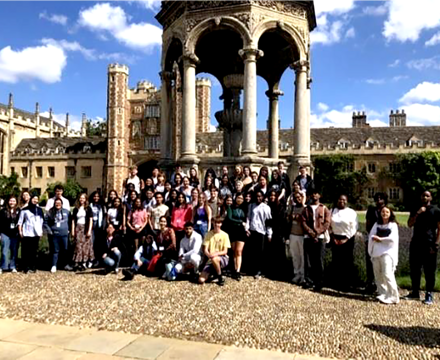Year 13 student attends Cambridge Biosciences Residential
Back
News - Sep 11
Written by Ella B, Year 13
Over my Year 12 Summer holiday, I was honoured to have the opportunity to go to Trinity/Homerton College at Cambridge University for its Biosciences 2023 residential.
I stayed for four days, studying four different topics of biosciences including zoology, plant biology, biochemistry and neurology – all taught at an undergraduate level through being in lectures, doing practicals with modern equipment, and doing our own little projects. My favourite part was plant biology where the content covered the physiology of plants especially focussing on the stomata and how they are affected by different conditions such as poisons and toxins. The photo of the clear open stomata from a leaf was done by using nail polish on the bottoms of leaves and peeling it off to look at it under undergraduate microscopes.
Not only were the academics challenging and fascinating, but I also met plenty of amazing people on the residential from around the world who aspire to go into biology like me.
A couple of weeks later, I was also given the opportunity to work with Dr Kyle Stewart, a Colyton Grammar School alumnus. Not only is he a part time GP, he also carries out research with Dr Paul Winyard on watercress and its proteins being used in treatments for medical conditions. At the moment, it is mainly focused as a cure for nappy rash, however upon future research, it can potentially be used for a myriad of other conditions such as eczema, H.pylori infections and potentially cancer as it contains anti-carcinogenic properties. Urease is a natural catalyst to convert urea in ammonia; watercress contains high levels of a urease-inhibitor enzyme which results in a lower production on ammonia. H.pylori uses urease to form an ammonia ‘shield’ buffer from harsh stomach acids for survival, so with the natural urease-inhibitor from watercress, it can break down H.pylori’s shield, weakening its defences and being destroyed by stomach acids – potentially creating a new antibiotic against H.pylori. Furthermore, it can increase the range of antibiotics that are effective, which is crucial due to increased antimicrobial resistance seen in H.pylori.
It was absolutely fascinating to see the facilities and laboratories where their hard work takes place, and to also have been given the opportunity to complete a small project for them on the potential use of a urease-inhibitor on rosacea.




